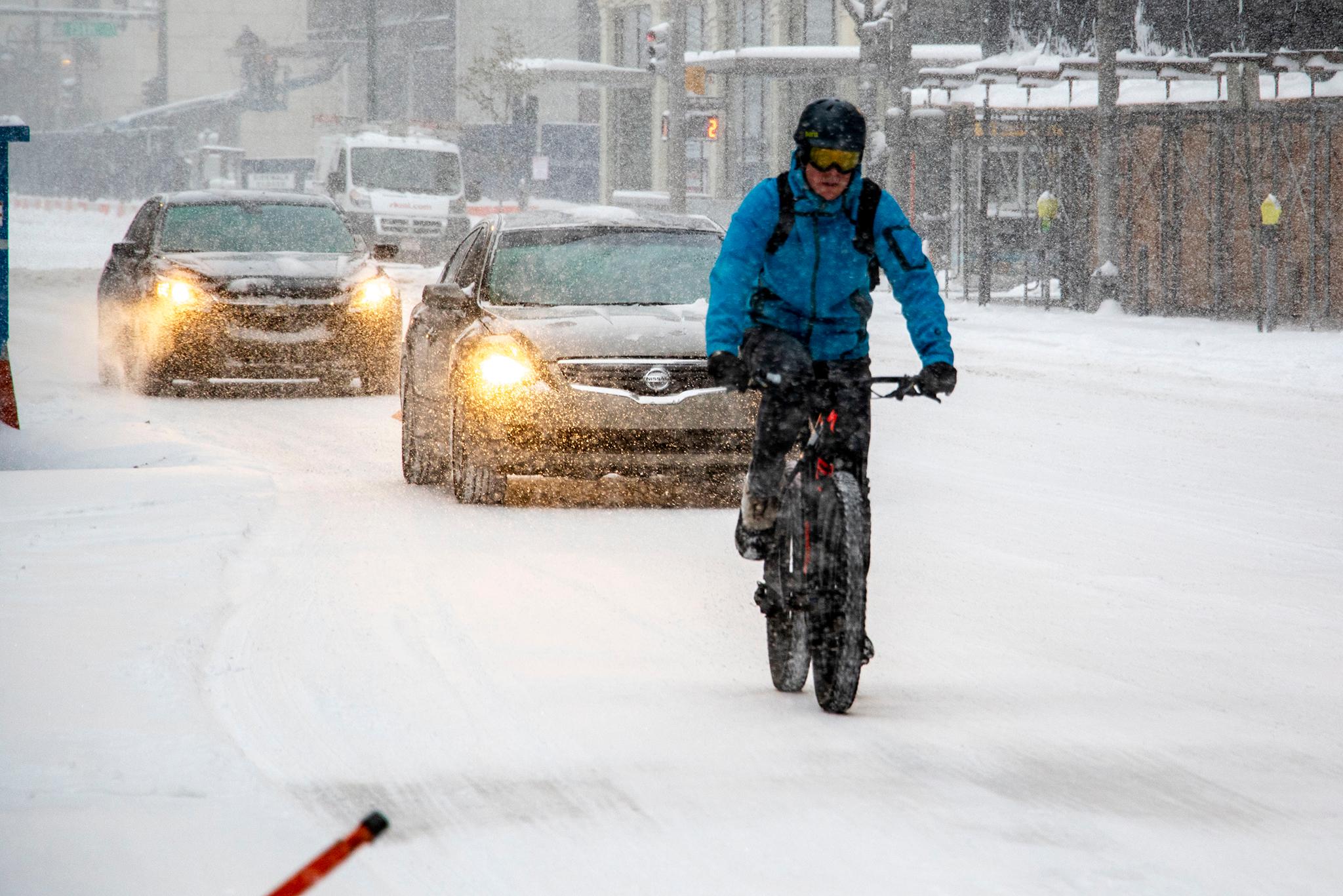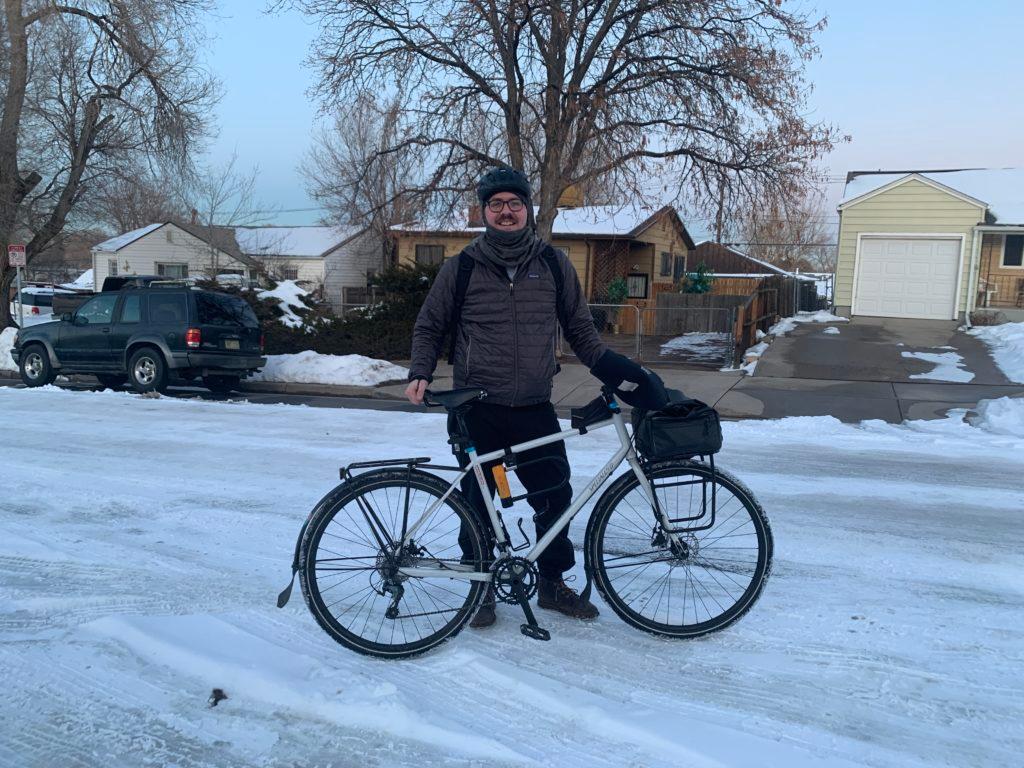
Do you love your bike, but leave it home on wintry, icy days?
With Winter Bike to Work Day coming up Friday, veteran cyclists have some tips to reunite you with your two wheels even when the roads and the bike paths look dicey.
Jack Todd, spokesperson for Bicycle Colorado, said the bottom line is to take it slow, give yourself extra time and be particularly careful at intersections where motorists may not be able to stop.

“What I see more than anything this time of year and with the weather like we've had the past couple of weeks, is people (in their cars) are going later and later through that yellow light because they don't want to slam on the brakes,” Todd said. “Going slowly is super important this time of year because that reduces crash severity if anything does happen.”
Winter biking is worth the extra effort, Todd said.
“You’ll learn something the first time you do it about the way your bike handles in deep snow, thinner snow, that kind of thing,” he said. “It's peaceful, it's beautiful, especially on these snowy days. I just couldn't think of commuting any other way.”
Tips For When You’re Riding
- Coast over ice. Try not to brake, pedal, or turn into it.
- Ride in low gear with lower tire pressure than the bike's recommended maximum.
- Lower your seat so you can more easily put your foot down.
- Keep your lights on, even in daylight.
- Distribute the weight on your bike (like bike bags) evenly.
The Gear
- The hardware: Todd normally rides his touring bike with un-studded ice tires. On road bikes, he advises studded ones. Disc brakes are important, too — they’ll stop in any weather.
- Clothes for your bike: “Bar mitts” for your handlebars. They’re basically mittens that are attached directly to the handlebars.
- And clothes for you: Todd usually wears multiple thin layers: regular work pants, a cotton T-shirt, sweater, puffy jacket, balaclava and a thin hat under his helmet. Wear water-resistant outerwear, not waterproof, which may make you overheat. When it’s extra cold, wear something like snowshoeing pants. “If you go skiing or snowboarding, you have everything you need to ride a bike in the winter in Colorado," Todd said.
- And finally, an irresistible extra idea: A shower cap to put over your helmet — it’ll keep out the snow and keep in the heat.








